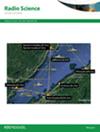车辆自组织网络中多跳通信的延迟最小化和后退感知q学习与先进的生物启发CH选择
IF 1.5
4区 地球科学
Q3 ASTRONOMY & ASTROPHYSICS
引用次数: 0
摘要
车辆自组织网络(VANETs)在智能交通系统中的重要性日益增加,带来了与高移动性、网络拥塞和能源效率相关的挑战。为了解决这些问题,本文提出了一种基于延迟最小化和后退感知q学习的新方法,并结合先进的生物启发簇头选择(DBACH)来增强vanet中的多跳数据传输。DBACH框架的特点是网络形成、延迟最小化、反向q -学习模型和改进的基于蜻蜓算法的CH选择。该方法降低了传输延迟、路由开销和功耗,提高了VANET的服务质量。对照RCDC、DCPA和WCAM评估DBACH的有效性。模拟车辆的数量和速度(km/h)被用来评估能源效率、吞吐量、数据包传送率、数据损失率、计算时间和路由开销。DBACH将能源效率提高到85 J,吞吐量提高到160-200 Kbps,数据包传输率提高到11%-13%。数据丢失率降低到7% ~ 15%,时延降低到60 ~ 94 ms,路由开销降低到170 ~ 300包。由于DBACH的效率、通信稳定性和成功率,它是提高VANET通信可靠性和能源经济性的一个有前途的选择。本文章由计算机程序翻译,如有差异,请以英文原文为准。
Delay-minimization and back-off aware Q-learning with advanced bio-inspired CH selection for multi-hop communication in vehicular ad-hoc networks
The increasing significance of Vehicular Ad-hoc Networks (VANETs) in intelligent transportation systems has introduced challenges related to high mobility, network congestion, and energy efficiency. To address these challenges, this paper proposes a new approach based on Delay-Minimization and Back-Off Aware Q-Learning with Advanced Bio-Inspired Cluster Head (CH) Selection (DBACH) to enhance multi-hop data transmission in VANETs. The DBACH framework features network formation, latency minimization, a back-off Q-learning model, and an improved dragonfly algorithm-based CH selection. This method reduces transmission delay, routing overhead, and power consumption to enhance VANET QoS. DBACH was evaluated against RCDC, DCPA, and WCAM for effectiveness. The simulated vehicle numbers and speeds (km/h) were used to assess energy efficiency, throughput, packet delivery ratio, data loss ratio, computation time, and routing overhead. The DBACH boosts energy efficiency to 85 J, throughput to 160–200 Kbps, and packet delivery ratio to 11%—13%. Data loss drops to 7%–15%, latency is 60–94 ms, and routing overhead is 170—300 packets. When DBACH is a promising option for enhancing VANET communication dependability and energy economy due to its efficiency, communication stability, and success rates.
求助全文
通过发布文献求助,成功后即可免费获取论文全文。
去求助
来源期刊

Radio Science
工程技术-地球化学与地球物理
CiteScore
3.30
自引率
12.50%
发文量
112
审稿时长
1 months
期刊介绍:
Radio Science (RDS) publishes original scientific contributions on radio-frequency electromagnetic-propagation and its applications. Contributions covering measurement, modelling, prediction and forecasting techniques pertinent to fields and waves - including antennas, signals and systems, the terrestrial and space environment and radio propagation problems in radio astronomy - are welcome. Contributions may address propagation through, interaction with, and remote sensing of structures, geophysical media, plasmas, and materials, as well as the application of radio frequency electromagnetic techniques to remote sensing of the Earth and other bodies in the solar system.
 求助内容:
求助内容: 应助结果提醒方式:
应助结果提醒方式:


